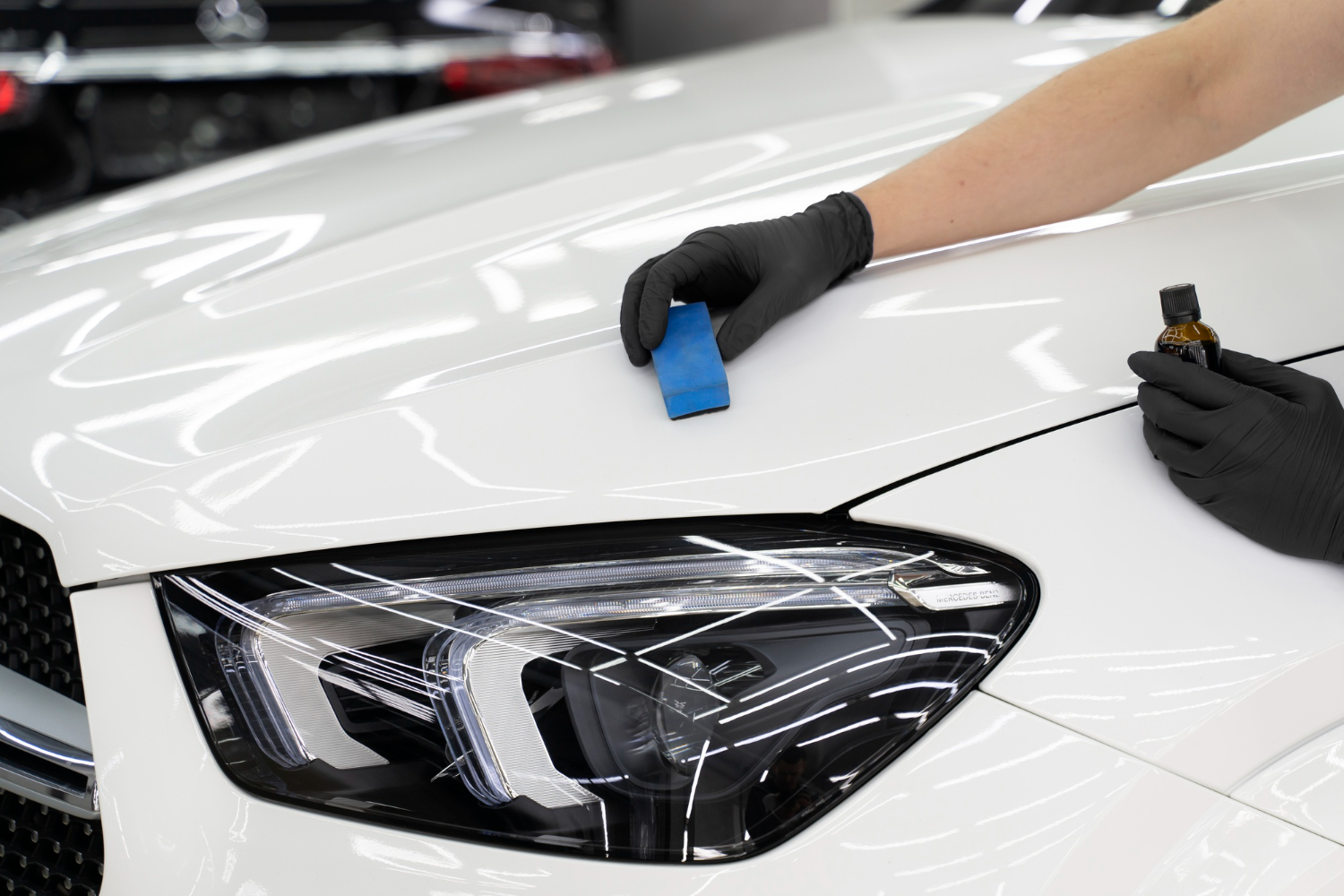The glossy finish of your car’s paint not only enhances its aesthetic appeal but also protects the underlying layers from damage. This critical layer, known as the clearcoat, plays a vital role in preserving your vehicle’s appearance and value. However, when the clearcoat starts to fail—with peeling, fading, or losing its shine—it can significantly impact your car’s look. Understanding the causes behind clearcoat damage and how to address it effectively is essential for every vehicle owner in California, especially in areas like Riverside and Moreno Valley, where sunlight and environmental factors can be harsh on your car’s paint.
What the Clearcoat Layer Does and Why It Matters
The clearcoat is the transparent, outermost layer of your car’s paint system. Unlike the base coat, which contains the color, the clearcoat is designed to provide protection against environmental elements and give the car its shiny, polished appearance.
Key Functions of the Clearcoat Layer
- Protection Against UV Rays
The clearcoat acts like sunscreen for your car, shielding the paint from harmful ultraviolet rays that can cause fading and oxidation. - Enhanced Gloss and Depth
It gives your car a reflective, mirror-like finish, making the color pop and ensuring the paint looks vibrant for years. - Armor for the Paintwork
The clearcoat serves as the first line of defense against minor abrasions, chemical contaminants, and moisture.
However, over time, exposure to harsh elements can degrade the clearcoat layer, leading to peeling, dullness, or discoloration.
Common Causes of Peeling and Oxidation
When your car’s clearcoat fails, pinpointing the cause is the first step to resolving the issue. Below are the most common culprits behind clearcoat peeling and oxidation.
1. UV Damage from Prolonged Sun Exposure
Living in sunny California, especially in regions like Riverside and Moreno Valley, means your car is constantly exposed to intense UV rays. These rays can break down the resin in the clearcoat, causing it to crack, peel, or fade over time.
2. Chemical Contamination
Exposure to bird droppings, tree sap, acid rain, or harsh cleaning products can eat away at the clearcoat. While these substances may seem harmless initially, over time, they can lead to damage if not addressed promptly.
3. Abrasion and Physical Wear
Frequent washing with abrasive tools, improperly waxing the car, or leaving surface scratches untreated can thin out the clearcoat. Once the protective layer becomes too thin, peeling becomes inevitable.
4. Age and Lack of Maintenance
If your car is older and hasn’t been properly maintained, the clearcoat is more likely to erode. A lack of regular washing, waxing, and protective treatments can speed up the deterioration process.
DIY vs. Professional Clearcoat Repair
When it comes to fixing clearcoat failure, car owners often wonder whether to attempt DIY repairs or leave the job to experts. While minor issues can sometimes be tackled at home, professional repairs are usually the best option for more extensive damage.
DIY Clearcoat Repair Solutions
For small spots of clearcoat peeling or light scratches, you can try these DIY methods:
- Use a fine-grit sanding block to smooth the affected area.
- Apply a clearcoat repair spray or a touch-up kit to reseal the damaged area.
- Finish with a polish to restore shine.
Drawback: Most DIY solutions are temporary and may lack the durability or seamless finish provided by professional services.
Professional Clearcoat Repairs
Trained experts like the team at Inland Empire Autobody & Paint have the tools, techniques, and high-quality materials to restore your car’s finish completely. The process typically involves:
- Sanding and removing the damaged clearcoat layer.
- Reapplying a premium-grade clearcoat for maximum protection and a flawless finish.
- Buffing and polishing for showroom-quality results.
Professional repairs not only restore the factory finish but also extend your car’s lifespan, making it a worthwhile investment.
How to Prevent Future Damage
Taking proactive steps to care for your car’s clearcoat can save you time and money in the long run. Here’s how you can prevent peeling and oxidation.
1. Regular Washing and Waxing
Wash your car regularly to remove dirt, grime, and contaminants that can break down the clearcoat. Waxing your car every few months adds another layer of protection.
2. Park in the Shade
Whenever possible, park your vehicle in a garage or shaded area to reduce UV exposure. Investing in a quality car cover is another excellent option.
3. Avoid Harsh Chemicals and Abrasives
Use eco-friendly, car-safe cleaning products to prevent chemical damage. Avoid automatic car washes with abrasive brushes that can scratch the surface.
4. Routine Inspections and Maintenance
Have your car inspected periodically by an autobody professional to catch early signs of clearcoat wear and address them before they worsen.
Bring Your Car’s Paint Back to Life with Inland Empire Autobody & Paint
Whether it’s fading, peeling, or scratches, our expert team is here to restore your car’s appearance and protect its value. Visit us at either of our convenient locations in Riverside or Moreno Valley, CA, and get your free estimate today.
📞 Riverside: (951) 637-1365 | 📞 Moreno Valley: (951) 465-7350
📧 Email us at info@ieabp.com — let’s get your car looking like new again.





